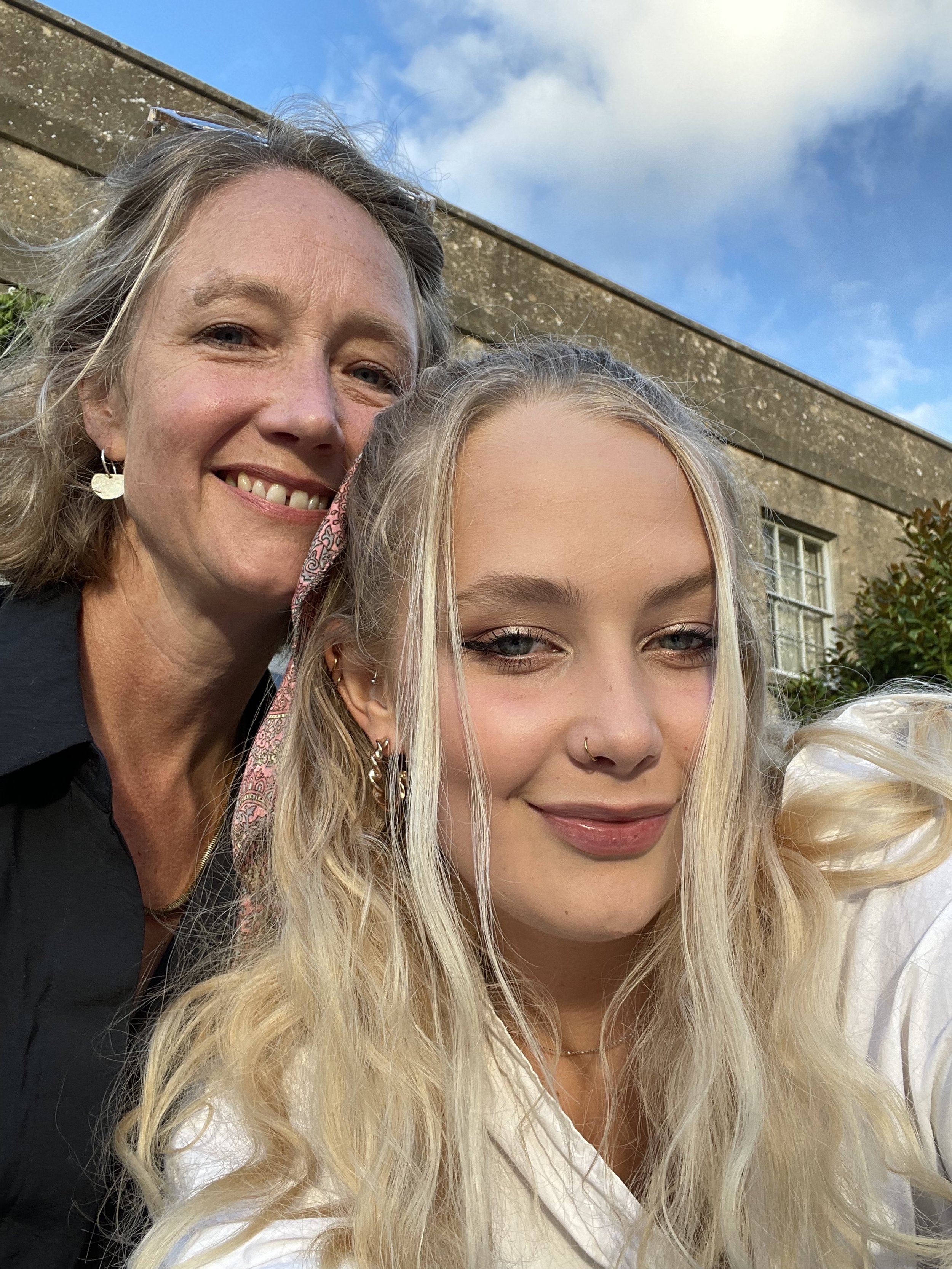
BLOG
Inspiration and news
How to Build a Happy and Engaged Team
Every sector I speak to at the moment from hospitality to tech, is finding it harder to recruit than ever before. So as a manager, how do you build a happy, committed and successful team who will stick with you through thick and thin? The short answer is, it’s not just about paying them more!
How to build a happy and engaged team?
There’s an oft-cited phrase that people don’t quit a bad job, they quit a bad manager. So how can you be the best leader you can be, so that people will stick with you through thick and thin?
Every sector I speak to at the moment from hospitality to tech, from plumbing to law, is finding it harder to recruit than ever before. It’s a job-seekers market with plenty of opportunities for people looking for something new. So the challenge for business leaders is to create an environment where your staff want to stay with you, who will go over and above to achieve the business objectives and don’t disappear when the going gets tough.
When your team feel engaged, inspired and valued, they will be much more willing to go above and beyond to create the best possible experience for your customers.
So as a manager, how do you build a happy, committed and successful team?
The short answer is, it’s not just about paying them more!
Building an engaged team begins with creating a connection and a community and a culture around a common purpose and values. This creates a sense of belonging and commitment.
Culture
Culture is that mysterious thing, that is hard to put into words and you can only really understand by experiencing it. You can break it down into the things you can see or have written down, in retail this includes things such as the uniform you might wear, the shop design (formal, informal, contemporary, traditional) and any written policies and manuals - but that’s just the tip of the iceberg.
The juicy bit is beneath the surface - the way you behave with each other, how you talk to customers, any rituals and routines you have - how you greet each other at the start of the day, how you communicate (formal meetings or casual chats) and any ceremonies you have - going out for a drink to celebrate or publicly rewarding staff for a significant achievement.
Facets of employee engagement
Beyond culture and community, there are several key facets of employee engagement. I suggest reviewing each of these - what do you do well, where are the gaps, is there anything that could be tweaked?
Do you have a positive culture? Are the purpose, values and aspirations of the business clearly communicated to everyone? How good is communication between management and staff
Do people feel that staff are making a valuable contribution, do they have a manageable workload?
Do your staff get recognition for what they do?
Do they have the right balance of support, autonomy and challenge?
Do people have the right resources and training to do their job?
Do people have the right work-life balance for them and how do you support people’s wellbeing? Of course, people have different needs and expectations and flexibility isn’t always possible in a retail environment, but be mindful of what else people have going on in their lives - whether it’s school runs, relatives to care for or exams to revise for.
What rewards do you offer? Of course, competitive pay and benefits come into it and security of income is important, especially in the current economic climate. Do you also offer incentives for higher performance although this doesn’t have to be a financial bonus, it could be a small gift for making a difference to a customer, or a voucher to spend with you (a bonus as it encourages them to get familiar with your products too).
What opportunities do you offer for personal growth and development? How do you support your staff to be the best they can be? This might be skills training for the job or mentoring from a colleague to develop soft skills, it might be just giving informal feedback to encourage them to push themselves forward or it could be knowing that there are opportunities for promotion.
Running through these questions will help you to identify any potential improvements you can make, but if you really want to know how engaged your team are, and what more they need - ask them. This could be through informal chats or perhaps a short questionnaire which can be completed anonymously. This gives people the opportunity to show what they appreciate and voice any concerns. If you can respond to these and you’ll show you care about your people and they’ll reciprocate with their commitment.
When to lead and when to manage
Think back to the most inspiring managers you’ve had in your life. How did it make you feel and how did it impact your commitment on the job or the subject?
I imagine the leaders you remember inspired and motivated you, you will have felt they listened to and valued and as a result, you felt more committed and focussed.
Now reflect on what kind of leader you are.
Think back to the most inspiring managers you’ve had in your life, or even the most inspirational teachers. How did it make you feel and how did it impact your commitment on the job or the subject?
I imagine the leaders you remember inspired and motivated you, you will have felt they listened to and valued and as a result, you felt more committed and focussed.
Now reflect on what kind of a leader you are. Are you an inspiring leader or hands-on manager?
Let’s explore the difference between leadership and management.
What’s the share purpose?
Imagine your vision is to create a wild flower meadow and you have a team of people to do the hard work. A manager would give a specific list of instructions and tasks to each person - ask them to drill the soil, to plant the seeds in a specific way and to water it precisely. While a leader will share his vision of a beautiful colourful meadow, rich in biodiversity and ask the team how you can work together collectively to make that dream a reality. Which do you think will get the best results?
A manager’s job is to set operational objectives and standards, but as a leader it’s your role to communicate the vision, the big picture, and share a purpose and values in a way that will appeal to your team and that will motivate them to get out of bed in the morning.
If your ambition is to offer the best most memorable customer experience or to create the most delicious quality cakes, what difference is that going to make to people, how are you going to do it and why should anyone believe you? In the corporate world this usually means creating and communicating mission, vision and purpose statements - what we do, why we do it and what we want to be known for; and communicating your values - then how do we do it?
Your Mission & Vision
You don’t need the carefully crafted statements you might see from big brands like Wholefoods or Waitrose, but do take time to answer those questions and share the results with your employees.
Another important quality of a good leader is to empower and enable staff, consulting with them, seeking and valuing their input and encouraging them to stretch and grow.
There is no right or wrong here, there’s a time and a place for both management and leadership. A good leader will be able to adapt depending on the person, the task, the context and the urgency. If you have a new starter with little experience or none of the technical skills required for the job, then you will need to be more manager, giving clear instructions and checking in on progress. In an urgent situation, for example dealing with a difficult customer, again you many need to step in and manage the situation more closely. But when you are dealing with someone who is highly committed, whether or not they have the experience of skill, you can step back to a more supportive, coaching role, ask for their ideas and help them develop their skills.
Many of the managers I work with find themselves more at the directive managerial end of the spectrum, telling, showing, instructing, and often admit to micromanaging because it’s easier and quicker, but this is the fast track to creating low morale and unengaged teams.
So to develop more committed staff who will help you build a successful business, start to build a partnership with them, share your vision, encourage shared ownership of the big picture, be transparent in communication, trust, listen and value their views, foster collaboration and together you will see great results.
10 Tips for launching a food & drink brand
Whether you are setting up a start-up business, hussling a side project, or introducing a new brand or product range to an existing business, here are my 10 Top Tips - well 11 tips in fact, for launching a food & drink business - or any business in fact.
Launching a new food or drinks brand or adding a new product to an existing range is exciting but challenging.
Whether you are setting up a start-up business, hustling a side project, or introducing a new brand or product range to an existing business, it’s essential to have a clear value proposition and USP (unique selling proposition), a defined target audience, a robust business plan and identified your routes to market.
Here are my 10 Top Tips - well 11 tips in fact, for launching a food & drink business - or a business in any sector.
Work out your value proposition
How does your product make customers happy? What is the value you offer? You are unlikely to be launching something completely new and unheard of, but what is unique about what you do?
Robert Breakwell of of Suffolk-based Niche Cocktails says:
“Know your market and competitors; what makes you different / better / relevant / what is your USP? What are you offering the consumer that no-one else is doing?”
2. Start with Why
Ok, so we’ve nicked this title from best-selling business guru Simon Sinek’s popular book. When you start to talk about your brand and product don’t just focus on WHAT you do, the product details like the taste, or HOW you do it - like your environmental measures, but WHY you do it. If you can clearly communicate why you exist, what’s your purpose or belief and why should anyone care, you will stand out from the crowd and build loyalty.
"If you believe in what you are doing so will everyone else.” says Breakwell.
3. Identify your target audience
As the old adage goes, if you are marketing to everyone, you are going to reach no-one! So be as specific as you can about what type of consumer you are trying to reach - whether it’s based on demographics (geography, gender, age) or their tastes, values and lifestyle. You can even create profiles of your typical customer to help build up their personality.
Robert Breakwell says: “Understand your consumer and focus everything on making your promise to them sincere.”
4. Create a business plan
You need to have a destination in mind and a plan of how to get there, how will you know where to start and how will you know if you’ve succeeded?
Think about the time and resources you need to launch your brand or product, what are all the steps, process and measures of success? It might be to sell a certain number of units or to launch in any number of stockists.
Alan Ridealgh, founder of Humber Doucy Brewery says “Have the best business plan you can create: think about the time and resources you need to build your business: do you need a space to create your product, equipment to make it, a website, packaging and marketing. Try and think of every element of your business from start to end.”
5. Ask for help in the right places
There is a huge amount of support out there for businesses of all sizes whether you are starting from scratch or a long-established. Look for what’s available regionally, your local Growth Hub is a good place to start and perhaps your region has a Food Innovation Centre.
6. Formulate a budget
How much is it going to cost you? What are the fixed costs or those that vary on how many units you are producing? Can you calculate a breakeven point - so you know how many units you have to sell to cover your costs? The reality is that the most common reason businesses fail is because they run out cash - so don’t forget your cashflow forecast.
"Have defined finance in place before starting and formulate a budget. Work how much it will be to set up, make your product and break even? How much can you charge and ensure you have the funding to ensure it survives.” Continues Alan Ridealgh, Humber Doucy Brewery.
7. Build a memorable brand
Your brand is far more than your name, your logo, your packaging, it’s about every connection that your customer has with you. Brand is what makes people remember you and why they will recommend you to their friends, so make it unique, genuine and consistent.
9. Identify your routes to market
Are you going to sell direct to your customers through a website or at events, or are you going to seek listings with independent retailers or aim high at supermarkets?
10. Tell the world
Social media is an amazing free resource to grow a community of fans. Focus on the right platform for your audience rather than spreading yourself to thin by being on all of them.
11. Work fast
Finally "Work fast – Being small gives you the opportunity to make decisions quickly and get there fast.” says Robert Breakwell.
How to do your own PR
Have you ever wondered how to get your product or service featured in the national press, featured in a glossy magazine or reviewed online?
If you have some exciting news to share, a brand new product or service, opened a new restaurant or shop, won an award or anything else you want the world to know about your brand, this workshop is packed with ideas of how to get your story into newspapers, magazines and digital media without the cost of investing in a PR agency.
In this workshop, I will share:
What is PR
How to tell your story and what makes it news
Ideas for how to get your brand and product into the media
Insight into how the media works
Tips on how to approach and build relationships with journalists
How to write a press release
How to maximise the PR you receive
This workshop was delivered for the Norfolk and Suffolk Food Innovation Cluster - which provides networking, training and support for food and drink businesses in the region.
If you have questions about PR or do need a bit of help, get in touch.
How to do your own PR workshop
Hospitality Mavericks Podcast interview
I’ve long been a fan of the podcast Hospitality Mavericks, so I was really excited to be asked by its host Michael Tingsager, to join him to chat about my work as an executive coach and running leadership development programmes.
We talk about the difference between leadership and management, how to build a strong, happy and engaged team, changing expectations of work life and just some of the challenges facing business leaders today.
I also share my own story of how I moved from hospitality and food & drink branding and communications to become a business coach, and how I build healthy routines and lots of exercise to look after myself.
You can listen to the podcast on all the usual podcast channels from Spotify, Apple, Google, Amazon and below on YouTube.
I highly recommend all the podcasts on Hospitality Mavericks!
Find them all here: Hospitality Mavericks >
International Women's Day - Women Chefs
My International Women’s Day shout-out goes to my daughter Bea who’s had a huge influence on me choosing to specialise in coaching and leadership training in hospitality and making it a better, happier, healthier place to work for everyone, especially women.
In the depths of the pandemic, aged just 17, Bea decided she wanted to be a chef and set off across the country to become an apprentice at The Pig Hotel, near Bath. Her interview was the day before the November 2020 lock-down began, and she was finally able to start as soon as hospitality could reopen outside only in April 2021.
Bea had grown up surrounded by chefs and food producers, being dragged on farm tours and to food festivals as a tiny child while I ran my field-to-fork experience business Food Safari. Trips and holidays always involved going to markets, food shops and restaurants. Perhaps it was inevitable she’d end up interested in food!
At the time we talked about how challenging life as a chef is, especially for women, physically hard work, emotionally draining, incompatible with being a mum, and still often a male-dominated, sometimes misogynistic, chauvinistic world. Like all good teenager daughters, she ignored my advice and off she went. I couldn’t be prouder!
Things ARE shifting and hospitality is becoming a better place to work for everyone with more awareness of diversity, calling out unacceptable behaviour and attitudes and looking after people’s wellbeing.
Women in hospitality make great leaders
And, of course, there are many inspirational women chefs out there, not just the big names you see on TV, but in every cafe, pub and restaurant across the country.
Women make fantastic leaders:
collaborative
empathetic and supportive
good at listening and communicating
creative
driven and determined
tenacious
It’s been fascinating working with some of you in my coaching & leadership workshops, and I look forward to meeting more of you!
Here are some photos of Bea’s early days at The Pig in 2021 and more recently.
Shift Your Perspective
How do you manage stress and build resilience for yourself and your team?
Shift your perspective
Moments of high stress can warp your perception of reality, making you feel like the world is out to get you.
Our brains are hard-wired to sense threat and tend to overreact in stressful situations.
Changing perspective allows us to release thinking patterns that no longer serve us and to see the world through fresh eyes.
What can you gain from looking at things another way?
Imagine you are a fly on the wall, or a bird in the sky - how would things look from up there?
HOW TO SHIFT YOUR PERSPECTIVE
Stop and notice how you feel.
Accept that feeling, don't push it away.
Create distance by naming it out loud or writing it down.
Change your surroundings.
Breathe
Ask yourself how much this will matter in a month, what about a year?
What are you grateful for?
What would your wisest most supportive friend say about this?
What's a different way to see it?
Now move forward.
How to manage stress & build resilience
How do you manage stress and build resilience for yourself and your team?
How do you deal with stress and build personal resilience?
Are things getting too much at work or at home, or juggling work and home life?
The first step is to be aware of when things are getting on top of you and stress levels are rising.
You might start feeling resentful, you might notice things are keeping you awake at night, or impact your mood more than they should. Do you find yourself complaining about things to family and friends? Have you tried asking for support or a change to find nothing improves?
When this happens it’s time to start to focus on your well-being.
What’s within your control?
You can’t control your emotions, but you can start to be aware of them and choose how to respond. If you’re under a lot of pressure, become aware of how much time and energy you spend worrying about things you can’t control. This will help you to reduce feelings of overwhelm or uselessness.
What is within your control?
What can you influence?
Let go of the things that you can’t control or change.
Tips to manage stress At Work
Take breaks, even if it’s just for a walk around the block.
Remember to have fun. Laughter makes us feel good.
When you feel stressed, step away for a moment and focus on your breath.
Don’t be afraid to ask for help when things get too much. You don’t have to do it alone.
If it’s getting too much, is there someone you can talk to? If not your manager, a colleague, a partner, a friend?
Tips to look after yourself At home:
Make time to get outside - fresh air and sunlight are good for our health and our brains.
Find some form of exercise that you enjoy and can make a habit, it doesn’t have to be running a marathon, it could just be a short walk.
Build good bedtime routines to promote good sleep.
Make time for your friends and family, connecting with other people is vital to our wellbeing.
Just do NOTHING sometimes.
Is it time to review your purpose for the year ahead?
Is it time to review your purpose for the year ahead?
Is it time to review your purpose for the year ahead?
The Christmas holidays and the start of the New Year are a time when we all tend to think about what matters most to us, we reevaluate and set ourselves ambitions for the year ahead.
As business leaders, it's a good time to do the same for our business, not least because this is a time when your employees often decide "New Year, New Job... and in this recruitment crisis you probably want them to stick with you.
A clearly articulated purpose achieves two things:
Defines and clarifies your strategic objectives
Inspires and motivates your team and gives meaning to what they do
Do you have a clearly defined purpose?
Putting man on the moon
There's a frequently quoted story (it may be apocryphal) about a cleaner at NASA being asked on a visit by President John F Kennedy what his job was. His answer: "I'm helping to put a man on the moon."
Why it matters
Studies have shown that companies with a well-articulated purpose have lower turnover rates and higher levels of employee engagement. They: Attract and retain the best people Boost productivity Improve morale and engagement
Reality... we're not there yet
According a 2019 survey of over 540 worldwide businesses by Strategy&, PWC:
More than half weren’t even “somewhat” motivated, passionate, or excited about their job
28% reported feeling fully connected to their company’s purpose.
39% said they could clearly see the value they create,
22% agreed that their jobs allow them to fully leverage their strengths
34% thought they strongly contribute to their company’s success.
What goes wrong?
Too often purpose statements are generic, non-specific and lack authenticity, which leads to : a lack of direction, people feeling lost, disengaement and low motivation How can your team help your business to achieve its goals, if they don't know where they fit in?
Ask yourself
Why do we exist?
What value are we giving our customers?
How and why are we unique?
Could someone differentiate our purpose from our competitors?
Could our team say what it is?
Live & Breathe it
Defining your purpose is just the beginning. If you can't live and breathe it, it's worthless. So make sure it's relevant, and achievable, and that you and your employees have the resources they need to deliver it.
How to build a happy hospitality team
Happy customers start with happy start who are united by shared values and purpose.
So how do you built a team of committed, motivated and succesful people?
Fact: it does include paying more money….
Happy customers start with happy start who are united by shared values and purpose.
So how do you built a team of committed, motivated and succesful people?
Fact: it does include paying more money….
Creating a positive culture or community
A culture where people are brought together by shared values and a common purpose, creates buy-in and provides a focus. It inspires people to go above and beyond to offer the best customer experience.Be an emotionally intelligent manager
People rarely quit a bad job, they quit a bad manager. Be a leader who is available, encouraging, empathetic, consistent, reliable calm, open-minded and self-aware and you will build a team that performs better and has higher job-satisfaction.Give people a voice and scope for meaningful work
Invovle people in decision-making and change, listen to their opinions, , value their experience, check-in with them and show your appreciation regularly to build mutual trust and autonomy.Give them the opportunity to grow
Most people say they would stay in a job longer if they had the opportunity to learn and grow. Support people in their personal development, let them take risks, give foward-looking feedback [feed-forward] and consider informal mentoring, not just formal training.Remember the whole person
Create a supportive environment that respects people's home lives and encourages a healthy balance . Be flexible where possible, be aware of part-time workers other responsibilities (student's exams for example), Encourage people to set boundaries around breaks or routines to switch off at the end of a shift.
Ask yourself:
How committed are your team?
How strong is your culture or community?
How could develop more shared values & purpose?
Do you know when to lead and when to manage?
Do you listen to individual’s views? Do you ask for them?
Do you value their experience? Do you tell them?
Do you look after the whole person?
Do you set healthy boundaries to enable breaks during the day or so they can switch off when they go home?
How do you support their growth & development?
To explore more ideas about how to build a happy, motivated team who will stick by you when business is thriving and when times are challenging. . .
Join my free online workshop
Stay & Thrive: Build a Strong Happy Team
January 16th, 10 - 11.30am
Sign up here and you’ll receive a link to zoom nearer the time.






































